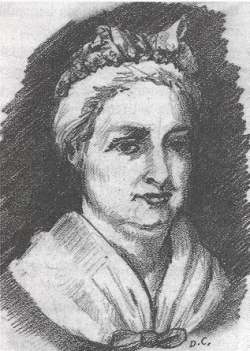 |
|
| Issue #29 • September/October, 1994 |
(This is a four-part series. Click the links to navigate to parts one, two, three, and four.)
It was the best of times, it was the worst of times…wait a minute, it was the worst of times. I was getting ready to head for Oregon again, driving through central California, from south to north without an air conditioner. On a good day in February a trip in an unairconditioned car up through the middle of the state can leave you somewhere between medium-rare and well-done.
I packed my cooler, one of those cheap little styrofoam jobs I’d bought for $2.99 at the supermarket. I filled it with ice, tossed in a bunch of fruit juices and sodas, some cream cheese spread, a bag of grapes, and four oranges, and I wedged it on the floor between the passenger’s seat and the dashboard of my little Honda Civic. The cooler squeaks no matter how I put it in there. Seven hundred miles of squeaking. I’m used to it and I’ve almost stopped talking to myself.
I put my computer on the floor behind the passenger’s seat, the monitor and my notebooks on the backseat, my boom box and CDs (there’s no radio in this car) on the passenger’s seat. Then I stood back and tried to think of what I was forgetting.
The sun had not yet risen from behind the hills that lie east of my house. If I got on the road early enough, I could be in Oregon before nightfall. From behind me I heard a short toot from a car on the street.
I turned and saw a strange van pulling to the curb. I thought it would be someone looking for directions, but when the door opened out stepped O.E. MacDougal, the poker player who’s a friend of Dave Duffy, the fellow who publishes this magazine. I looked eastward again. The sun was about to break over the hills. I didn’t have time for a visit.
He walked up my driveway and looked into my car.
“You’re all packed,” he said. There was disappointment in his voice.
“I want an early start,” I said. “I’ve got a long trip ahead of me.”
“I was hoping to get up here before you got on the road.”
“Why?”
“To see if you wanted to ride up with me.”
“With you? I’m going to Oregon.”
“Dave was supposed to tell you I’m going up there too. You want to ride with me?
“It had taken me about 30 minutes to pack my car. I emptied it and loaded everything into Mac’s van in just under 90 seconds and we were on the road before the sun cleared the hills.
It was the first time I was going up north with company. Now I had someone to talk to besides myself, and Mac’s cooler doesn’t squeak. And did we talk, about everythingsports, politics, the three Punic Wars, the imminent collision of the Shoemaker-Levy 9 comet with Jupiter.
We even talked about presidential wives. Not the presidents, but their wives. Who would have thought they could be interesting? Right as we were passing through Stockton, I made a comment about the latest one in the White House.
“Have any others been as controversial as she?” I asked.
“First Ladies have always been controversial. They’ve been accused of wielding too much influence with their husbands, immoral behavior, spying, even insanity . . . and sometimes the accusations were true.”
“Insanity?”
“Mary Todd Lincoln was thought to be insane”
“Well, it’s probably still a great job if you can get it,” I said.
“Being First Lady? I don’t know. Some women loved it, quite a few hated it. When Franklin Pierce’s wife found out he’d been elected President, she faintedand it wasn’t from joy.”
“I would have thought it’s a job any woman would want.”
“I’d say, as a rule of thumb, the younger they are when they get there, the better they like it. Otherwise, there aren’t a lot of generalities to be made about them. They’ve been as different from one another as people in any group have ever been. And on top of that, in the two centuries there have been First Ladies, the lot of women in general has changed considerably.
Martha Washington the perfect 1st First Lady

Martha Washington
“Just consider the very first of the First Ladies, Martha Washington. In the eighteenth century, women were not usually given a formal education and the education she got, though she came from a well-to-do family, wasn’t much more than just being exposed to books. She was trained to run a household and to deal with servants. That’s what her job was going to be. It was all society expected of her.
“So, though she could read, it never became a passion with her. In fact, she was an atrocious speller. Imagine what the press would make of it if we had a First Lady like that today?
“Another thing to consider when you compare First Ladies of 200 years ago with First Ladies of today is how death figured into their lives.”
“Death?” I shuddered. I’ve been accused of having a morbid preoccupation with death.
“Yes. Nowadays, death is almost an unusual event. But 200 years ago it was always at the door.”
“Really?”
“Sure. In 1962, when Jacqueline Kennedy gave birth to a baby boy that died in less than 48 hours, it became part of the media circus. But in the early days of this country there was barely a First Lady with children who didn’t lose one or more before they were grown.
“And in a day when divorce was almost unheard of, the leading cause of broken families was death of a spouse.
“For example, George wasn’t Martha Washington’s first husband. She’d been married when she was much younger. But almost all women married young then. She was just 17 and the man, Daniel Custis, was in his thirties. They both came from well-to-do families and they had settled comfortably into marriage. But, when she was 25, he died. Not only that, they had had four children, only two of whom survived infancy, and one of those, a girl, died while still a child. The other, a son, died soon after the Revolutionary War, and George and Martha raised his children.
“Just remember that death played a much bigger part in the lives of the early First Ladiesas it did in the lives of all women in those daysand you’ll have a deeper appreciation of them. I find it amazing that families functioned when so many of the children died. Today, there are people who don’t know anyone who’s experienced the death of a young child.”
“How’d she meet Washington?” I asked.
“She’d been a widow about a year. She was one of the richest widows in Virginia, and a mutual friend introduced them. George was a colonel in the Virginia militia. He was tall, imposing, and sociable; they hit it offto use a current termand they got married and settled into a very comfortable life on her plantation.
“Love at first sight?” I asked.
“No. History has told us that Martha wasnt his true love. Sometime before, he’d fallen in love with Sally Fairfax, the wife of a friend. It was a love affair of the heart only; none of the hanky-panky Hollywood drools over. Sally was probably the only woman he ever romantically loved.
“Of course, we’d never have known any of this because history would have forgotten the Washingtons, except for one thingthe Revolutionary War. He was chosen to lead the newly formed American army and went off to war. And she followed. She joined him each winter when the army made winter quarters, and she joined him not as a spectator, but as a participant.”
“Participant?”
“Though one of the richest women of her times, she nursed the wounded, sewed for them, and generally took care of them. At least once, she was mistaken for a servant by soldiers who did not recognize her, and many of the women who came to meet the wife of the Commander-in-Chief were surprised to find her sewing clothes for the troops while she entertained. It was not something these other women would ordinarily have done, but they pitched in when they saw her doing it. And please remember, she wasn’t doing this for photo opportunities as a First Lady might do today. She just did it.”
“You sound as though you admire her.”
“I admire several of the First Ladies.”
“Okay, but tell me, how’d she like the public eye?”
“There was no public eye to speak of in those days. But, as with so many of the women who followed her, there’s no reason to think she would have liked it.”
“How did the people in Washington, D.C. see her?” I asked.
“She never lived in Washington, D.C. In fact, she’s one of the only two First Ladies who didn’t.”
“Who was the other?”
“William Henry Harrison’s wife. He died before she got a chance to move there.”
“So, where was the capital?”
“The very first presidential home was in New York City. But there’s no reason to believe she liked New York. Nothing against New York or New Yorkers. It’s just that she’d been born to, and belonged on, a plantation. The capital moved to Philadelphia in 1790.”
“How did the guy-on-the-street perceive her?”
“The guy-on-the-street didn’t know who she was. She spoke publicly just once, and that was on her way to her husband’s first inauguration.”
“What moved her to speak then?”
“As she went through Philadelphia, she was so moved by the crowds that supported her husband, she spoke to express her appreciation. But she never spoke to the public again.”
“She wouldn’t be able to get away with that nowadays,” I said.
“Stumping was not a woman’s job then. None of the wives of any of the early presidential contenders did it. In view of the times, it would have cost votes.”
“Why?”
“It was just something women didn’t do.”
“Did she like being First Lady?”
“No. The Washingtons were not great socializers and made it a habit to retire early each eveningeven during his Presidency.
“Still, there probably couldn’t have been a better First Lady than she, anymore than there could have been a better first President than her husband. No one knew how a democratically elected President or his wife should act. Virtually all of the world’s leaders of the time were some sort of autocrats.
“George dispensed with all the trappings and pretensions of royalty, and Martha, by being herself, influenced the behavior of all the First Ladies who followed her.”
“Did she know any of them?”
“She knew several of them. She and the second first lady, Abigail Adams, were good friends and she assisted in the wedding plans for the First Lady who was destined to become the most famous of them allDolley Madison. I hardly noticed as we passed through Sacramento around noon.

Abigail Adams
Abigail Adams political, influential
“Abigail Adams was the next First Lady, right?”
“Right.”
“What was she like? Anything like Martha”
“No. She was very literate. It’s not that she was better educated than Martha. Both of their educations consisted of home tutoring, but her temperament was different and she developed a passion for books and all things intellectual. It made her unlike most other women of her time.
“She is also very important to historians. A lot of what we know about the early history of the United States comes from a lifetime of correspondence between Abigail and her husband, John. She also corresponded with the third President, Thomas Jefferson.
“Martha, by the way, wrote letters to her husband, too, but destroyed them all before she died. So there are things we’ll never know about there relationship.
“Abigail, however, through her letters revealed herself to be well informed, very political, and extremely perceptive. We now know she was an extraordinarily capable woman. For 10 years, while her husband served in various official positions, she ran the family farm in Quincy, Massachusetts, hiring the help, renting to tenants, buying and selling land, and tending to all the financial management.
“And in her correspondence with John, she always voiced her opinions on the affairs of the day.
“Did she influence him?”
“Absolutely. But he didn’t always heed her advice.”
“Why?”
“Some of her opinions were too controversial for their day. We know from one of her letters that, while the Continental Congress debated whether to call for independence, she warned her husband that the the men in attendance should remember women would not hold themselves bound by any laws in which they had no voice or representation. She said women might rebel.”
“What was his reaction?”
“He was unusually patronizing toward her. It just wasn’t something men were ready for yet.”
“But otherwise they got along?” I asked.
“Sure. She was both a good match and a good foil for him. He was cold and often arrogant and didn’t win friends easily. She was charming, tactful, and favorably impressed almost everyone that met her.
“And remember what I said about death? Things happened in those days that you would never see happen today.”
“Such as?”
“People usually died at home back then and Abigail missed her husband’s inauguration because she stayed home to tend his mother who was sick and busy dying.”
“What did the folks in Washington think of her? … did she ever live in Washington?”
“The Adams’s were the only First Family to live in all three capitals: New York, Philadelphia, and Washington, D.C. And apparently, the Washingtonians of her day liked her just fine. She was, by the way, the only woman, so far, to have been the wife of one President and the mother of another.”
“That’s right, the Adams’ son was John Quincy Adams. But let’s hold off on his wife.
Who was the next First Lady?”
Did Thomas Jefferson have a black mistress?
“Well, the next President was Thomas Jefferson. He was the first of many men to go to the White House as a widower. His wife, Martha, had been dead for 18 years when he was elected, and he never remarried.
“He, on the other hand, was her second husband. She’d first married when she was 17, but she was widowed when she was 19. Four years later she married Jefferson. Ten years after that, she was dead after giving birth to their sixth child.
“So, there was no First Lady during his term?”
“No First Lady per se, but there were White House hostesses who filled the roll and could be considered First Ladies.”
“What do you mean?”
“Two of their six children survived to adulthood…”
“Just two?”
“Yes. They were both daughters and, as was often the case in those days, when they married they married men who were their cousins.
“These two daughters served as hostesses, along with a future First Lady, Dolley Madison, whose husband was Jefferson’s Secretary of State.”
“Why didn’t Jefferson remarry?”
“I don’t know. Maybe he would have, if he’d had a choice, but he felt he couldn’t. For the rest of his life, there were rumors and accusations that he took one of his slaves, Sally Hemings, as a mistress and that she bore him five children.”
“Did he?”
“I don’t know, and I don’t know if anyone else is sure. But there is the possibility that this is the woman he loved after Martha and that she bore him children. But, times being what they were, there’s no way they could have any more than the secretive relationship that’s been speculated about.”
“So, if attitudes were different, there’s a chance we could have had a black First Lady.”
“If the rumors are true, I suppose it’s possible.”
“So, who’s next?” I asked.

Dolley Madison
Dolley Madison First Lady for the ages
“Well, Dolley Madison was the very next First Lady.”
“And you said Martha Washington had a hand in her marrying James Madison?”
“Yes, and Dolley was another young widow, just as Martha had been. She’d married a Quaker, John Todd, at the age of 22. They had a son together, but three years later an epidemic of yellow fever swept through Philadelphia and killed both her husband and son.”
“Was she another rich widow?”
“No.”
“How’d she meet Madison?”
“She was just 25, and was catching the eye of many of Philadelphia’s bachelors.”
“Philadelphia?”
“It was still the capital.”
“Okay.”
“One of the men was a 43-year-old Congressman from Virginia, James Madison. Their marriage was encouraged not only by Martha, but by Aaron Burr, the man who would eventually kill Alexander Hamilton in a duel.”
“So, at 25, she already knew a lot of important people.”
“That’s right.”
“If she was just 25 and Madison was 43 . . .
“She was a lot younger, also taller and heavier. He wasn’t a big man.”
“Anyway, his political star was rising and he was well regarded by his peers. She married him, and six years later, when Jefferson was elected President, he appointed Madison his secretary of state and they moved to the new capital, Washington, D.C. But the District was still an undeveloped marshy wilderness with a serious housing shortage so Jefferson invited them to live in the White Housewhich wasn’t called the White House, yet; it was called the Executive Mansionand they spent their first three months there.”
“Is that how she started helping with the hostessing duties at the White House?”
“Yes. And she didn’t impose. She acted as official hostess at Jefferson’s insistence.”
“How was she received when she became First Lady in her own right?”
“She was one of the few women who really seemed to enjoy it. During her husband’s administration, when she hosted White House dinner parties, she sat at the head of the table. Madison, the chief architect of the Constitution and, along with George Mason, one of the two forces behind the Bill of Rights, as well as a great debater, didn’t like to lead the conversation.”
“You’re kidding.”
“No, I’m not. He left that to Dolley.”
“Wasn’t there something about her saving some valuable stuff from burning in the White House?”
“It was during the War of 1812, which took place during Madison’s administration. British troops invaded Washington, D.C. and, while her husband took command of some troops and rode off to meet them, Dolley was left in charge of the White House.
“No one knew until it was too late that the British were coming her way to perhaps capture the President and burn the Executive Mansion. When she realized this, she took it upon herself to save several of the national treasures including the original draft of the Constitution, the Declaration of Independence, important cabinet papers, and one of Gilbert Stuart’s famous portraits of George Washington.
“The British got there right after she left and torched the place, burning it to only a shell. It wasn’t habitable again until Monroe’s administration, and the Madisons spent the rest of their time as the First Family living in various houses around the District.
“When the Madison administration ended, they moved back to the family estate, Montpelier, in Virginia. Nineteen years later James died and she moved back to Lafayette Square, which is in the District. That was 1836. A year later, for the third time, another widower, Martin Van Buren, took office.”
“The third widower?”
“Yes, first Jefferson; then Andrew Jackson, who preceded Van Buren; then van Buren.”
“It’s funny,” I said, “but because of public relations, it’s very unlikely that we’d ever elect another unmarried widower to the presidency.”
“I think you’re right,” Mac said.
“Did Van Buren ask for Dolley’s help?”
“No. But when she offered it, he accepted it. She was already an icon in Washington, and she often served as hostess throughout his administration along with Van Buren’s daughter-in-law, Angelica, whom Dolley introduced into his family.
“But Van Buren served only one term and was succeeded by William Henry Harrison. Harrison’s administration lasted just 30 days. He died of pneumonia brought on by standing in the rain during his inauguration. But his successor, Vice President John Tyler, was also a widower and though Tyler’s daughter-in-law served as First Lady, Dolley was always there to give assistance, assurance, and advice.”
“No wonder she was so famous.”
“Her story doesn’t end there. Later, when Tyler left office, James Polk became President and, though Dolley and Polk’s wife, Sarah, became best of friends, the Polks were not into entertaining. In fact, Mrs. Polk didn’t even allow alcohol in the White House. But once again Dolley filled the role. After many White House functions, guests often went to her residence in Lafayette Square for something stronger than what Sarah Polk served.”
“So, how many years was she associated with White House functions?”
“Not quite half a century. She became, in her time, one of the best known figures in Washington. She served as either First Lady or the official White House hostess longer, and for more Presidents, than any other woman ever has or likely ever will. When she died, at the beginning of Zachary Taylor’s administration, she was 82 and she was given what amounted to a state funeral.”
“Wow. Why don’t they teach this stuff in grade school?”
“They did at one time. They just don’t anymore.”
“Did she have much influence on the First Ladies that followed her?” I asked.
Elizabeth Monroe ”la belle Americaine”
Mac let out a sigh. “The two most difficult reigns as First Lady were probably Martha Washington’s and Elizabeth Monroe’s.”
“Why’s that?”
“Washington’s because there had never been a First Lady before. There were no traditions and no precedents. Martha was First Lady when no one knew whether she should behave like royalty or a commoner. She managed by just being herself.”
“But Elizabeth Monroe had a tougher job. She had to follow Dolley. Though history is slowly forgetting her, Dolley was really the most successful White House hostess ever.
“But Elizabeth Monroe had one thing going for her.”
“What was that?”
“She came to the White House as a heroine.”
“Really?”
“Her husband served several years on diplomatic assignments in Europe, particularly France. While there she acquired a taste for French clothing, French furniture, and other things French which became part of her mark on the White House. But it was also in France that she acquired the reputation as a heroine.”
“What’d she do?”
“Her husband served as U.S. minister to France during the French Revolution. The aristocracy was shaking in their collective boots. King Louis XVI, Marie Antoinette, the famed chemist Lavoisier, and a parade of others had gone to the guillotine. It seemed no one, regardless of their station, was safe in France. In fact, the higher your station, the more likely you were to feel the kiss of the guillotine, and among those who appeared destined for the blade were the Marquis Lafayette and his wife.”
“Wasn’t Lafayette a hero in our own Revolution?”
“That’s right. And at the height of the French Revolution, with mobs running in the streets and members of the aristocracy queuing up for their turn to be beheaded, Elizabeth Monroe would cross the streets of Paris in a carriage to visit the imprisoned Mdme. Lafayette. The French admired this kind of courage, and because of it they released Lafayette’s wife and gave Elizabeth the sobriquet, ‘la belle Americaine.'”
“What was she like as First Lady?”
“She did some things future First Ladies appreciated. Martha Washington had established the tradition of returning the calling cards of all who had visited her. As a result, First Ladies spent their days dashing about Washington.
“Even Dolley Madison didn’t dare veer from this tradition.
“Elizabeth Monroe stopped it and, though it earned her criticism in Washington social circles, it no doubt won her the thanks of every First Lady to follow her because, suddenly, First Ladies were no longer slaves to the Washington social scene.”
“I guess today, what with all the people who would love to get the President’s or the First Lady’s ear, it’s a godsend,” I said.
“True, but it probably happened more because Elizabeth wasn’t inclined to assume all the duties of a Washington hostess. And she didn’t. She and her husband allowed their married daughter, Elizabeth Hay, to plan and conduct many of the White House functions.
“This daughter, raised and educated in Europe, counted among her friends Hortense Beauharner, a relative of Napoleon and, for a time, Queen of Holland. She knew that Europeans still regarded Americans as somewhat backward, and it was her ambition to make the White House more European. But she neither impressed the Europeans nor did she win the appreciation of her fellow Americans. The result was that, between her and her mother, White House functions were less than fun.
“Oh, there’s something else you might want to add: It was during Monroe’s administration that the presidential mansion became known as the White House. It was then that they painted it white to cover the burn scars and soot left over from being burned by the British.
“What color was it before that?”
“Brown, I think.”

Louisa Adams
Louisa Adams a tragic heroine
“Who was the next First Lady?” I asked.
“John Quincy Adams’s wife, Louisa.”
“What was she like?”
“In some ways she was like her mother-in-law, Abigail Adams. She was bright, literate, and articulate. She was also an accomplished harpist and pianist. She wrote poetry and was fluent enough in French to translate French literature into English.”
“Sounds brilliant.”
“She was. But here the similarity ends. Where Abigail was strong willed, Louisa Adams was weak and meek. And where John Adams was warm and lovingat least with AbigailJohn Quincy was cold and dominating with Louisa. John frequently referred to Abigail as his partner. There as none of that with John Quincy and Louisa.
“If any First Lady was treated worse by her husband, I don’t know who it was.”
“She’d been born in London to an American father and an English mother. She met John Quincy when he was visiting London. His idea of courtship was to give her a study plan to prepare her for marriage, then leave after telling her he’d be back within seven years.”
“She bought into this?”
“They got married in 1797. In their first 13 years of marriage, she was pregnant 13 times. But only three of the children lived.
“When they returned to the United States, he was elected to the Senate from Massachusetts.
“Then, in 1809, he was appointed minister to Russia. He told her she had to go with him, that she had to leave the two eldest children in Massachusetts, but she was to bring the baby to Russia.
“When you went to Europe in those days, you had to plan on being gone for a long time, and she knew it would be a long time before she saw her children again.”
“So she didn’t do it, right?” I asked.
“Yes, she did.”
“Didn’t she miss her kids?”
“Of course she did. Not only that, but she was miserable in Russia. They didn’t have the money needed to entertain and they had few friends. While there, she also gave birth to a daughter, but she died.”
“Talk about bad times.”
“It gets worse. When they left Russia, John went on alone to Paris. He ordered her to follow him. She left with her son, who was then just six, a French maid, and a small escort of Russian soldiers. It was winter. During their trip, their water and wine froze. Ice on frozen rivers often threatened to break up and swallow their carriage, and when rumors reached them that Napoleon had escaped from Elba, all the soldiers desertedall except for a 14-year-old boy.”
“A 14-year-old soldier to protect her?”
“That’s right.”
“Men letting her down. It sounds like the story of her life.”
He laughed. “Hold on, it gets worse.”
“It can’t,” I said.
“It does. At one point, they were attacked by French soldiers. They were dragged from their carriage and the soldiers were about to murder themand probably rape her until Louisa, speaking to them in French, screamed things like ‘Viva Napoleon’ and convinced them she was American.”
“Are you making this up?”
“No. But just listen; there’s more.
“When they reached Paris, John Quincy met her. He was on his way back from the theater, and he gave her hell for arriving late.”
“That’s all he had to say?” I asked.Mac smiled and nodded.
“Has anyone ever made a movie about this?”
“Nope. She’s one of the great tragic female figures in American history. But not one person in a thousand, now alive, knows she ever lived.”
“I hope things got better when she was First Lady.”
“Nope. The election of 1824 was a four-way race. Among the contenders were her husband; the ever popular hero, Andrew Jackson, whose fame was the result of his victory over the British at the Battle of New Orleans; the perennial presidential contenderthe Harold Stassen of his timewho had the nickname the Great Compromiser, Henry Clay; and a man named William Crawford.
“Jackson finished with the most popular votes and the most electoral votes. But he didn’t win a majority of the electoral votes, and that’s what it takes to win the presidency. In accordance with the Constitution, the election was thrown into the House of Representatives.
“But in the House, Clay unexpectedly threw his support to Adams, and it was just enough for Adams to win the presidency. But right after the inauguration, Adams made Clay his Secretary of State, which in those days was considered a stepping stone to the presidency. In fact, of the seven presidents to follow Washington, five had served as Secretary of State.”
“Wow.”
“By the way, you might want to add this to your Gee Whiz file: of the 34 presidents since, only one has been Secretary of State.”
“Who was that?”
“James Buchanan.”
I wrote it down.
“So how did that affect Adams’s presidency?”
“The public never felt good about it. Suspicion surrounded his administration, and he became a tremendously unpopular President. Without many friends, he and Louisa were often alone at the White House. Their marriage, already unhappy, became quarrelsome and Louisa’s life became even more unbearable.
“To top it all off, when the Monroes left the White House, they took their furniture with them and the Adamses, who as you should recall couldn’t afford to entertain in Russia, didn’t have enough money to refurnish it.”
“Doesn’t the President get expenses for stuff like that?”
“Nowadays, but not then. As a result, the White House always looked shabby while they lived there.”
“What did this woman do for relief?”
“In spite, or maybe because, of all of her experiences, she became an early champion of women’s rights. Late in her life, in an effort to understand a woman’s place in the world, she studied the Old Testament and found evidence that equality of the sexes was intended.
“She also corresponded with feminists of her day.
“And when she discovered her mother-in-law’s letters…”
“That was Abigail . . .” I said.”
That’s right . . . when she discovered the letters, and became aware of the impact Abigail had had on the birth of the United States, she took the letters to heart and treasured them for the rest of her life.”
“Why didn’t she just divorce Adams?”
“It wasn’t something you did in those days.”
“Anything else she ever did we should know about?”
“She once bought a slave.”
“Come on. First you make her out a tragic heroine, then you spoil it all by telling me she bought a slave.”
“That’s right.
And no self respecting New Englander would have bought one. But, she bought title to a black woman, then freed her. It was one of the last significant acts of her life.”
“So she did it just so she could set her free. She did something for another that she couldn’t do for herself.”
The signposts said we were closing in on Willows. I thought about Louisa Adams for awhile. But Mac was still talking.
Tarnished reputations
“I said earlier that Andrew Jackson was a widower when he assumed the White House. His wife, Rachel had died in January of 1828, just a few months before his inauguration.”
“So she never filled the role of First Lady,” I interrupted.
“No; she was, however, an interesting figure in her own right.”
“Tell me something about her.”
“Jackson wasn’t her first husband.”
“She was another widow.” I said presumptuously.
“Nope. She was the first First Lady to be divorced.”
“I didn’t think anyone got divorced in those days.”
“Not usually. When she was 17, she’d married a man named Lewis Robards. He was a violent and jealous man. For six years she endured in a marriage, no part of which was made in heaven. When she was 23, he left her and told her he was filing for divorce. A year later she married Jackson. But as it turned out, Robards hadn’t divorced her at all and in 1793 he sued her and Jackson for adultery.
“To make a long story short, the divorce was finally settled and a year later she married Jackson again. But the story became grist for the scandal mills and it followed them for the rest of their lives. Some think it was the scandal that wore her down and ultimately killed her.”
“So who filled in as First Lady for Jackson?”
“The Jacksons had no children of their own but they adopted one of the twin sons of one of Rachel’s sister-in-laws and renamed him Andrew Jackson, Jr. They also raised another one of her nephews. This one later married one of his cousins . . .”
“Like Jefferson’s daughters married cousins?”
“Right . . . and they lived at the White House for most of Jackson’s two terms.”
“What was her name?”
“Emily Donelson. She was just 21 and a mother of one when she began her reign as hostess. She had three more children while a White House hostess, and Jackson, who loved kids, loved having her and her family there.”
“Nice job for a 21-one-year old,” I said.
“It didn’t go well at first. Jackson’s Secretary of War, a guy named John Eaton, had married a woman who, like Rachel Jackson, had what they called a ‘tarnished reputation.’ Washington women, Emily included, shunned her. Jackson, remembering the grief that scandal, rumor, and gossip had caused in his own marriage, and the effect it had had on his wife, insisted Emily accept the woman.
“To make another long story short, when she refused, he sent her packing back to Tennessee. But it didn’t last long. He missed her, and he missed her children, so he asked her back.”
“What about Eaton’s wife?”
“Jackson appointed Eaton governor of Florida andzoomthe Eatons were out of Washington.”
“Who’s next?”

Angelica Van Buren
Angelica Van Buren
“The next President was Martin Van Buren. He was the third man to assume the presidency as a widower. His wife, Hannah, had died 18 years earlier and he raised their four sonsall of whom, by the way, survived childhood.”
“So this time the mother died but all the kids lived,” I said.
“That’s right. The stories of the First Ladies are filled with both tragedy and irony. Anyway, he was elected to the presidency and five men moved into the White House.
“For the first time, it appeared there would be no First Lady. But Dolley Madison was still alive and, as I said earlier, she arranged to introduce a young lady into their midstAngelica Singleton. Angelica was a cousin to Dolley by marriage.
“The Van Buren men took to her immediately and one of the sons, Abraham, married her so America had another official White House hostess.
“Incidentally, Angelica was one of the women who loved being a White House hostess. But, of course, she was young.”
Anna Harrison widowed too soon
I saw another road sign telling us we were approaching a town called Orland. The miles were melting away like butter on a hot griddle.
“The next President was William Henry Harrison, hero of the Indian wars and son of one of the signers of the Declaration of Independence,” Mac said. “He was 68 when he took office and there would not be a first-term President older, until Reagan.
“His wife, Anna, had stayed home, too sick to attend his inauguration. The inauguration didn’t go well anyway. The weather was bad and he contracted pneumonia.
“A week later, Anna had recovered from her own illness and was packing for the move to Washington, when word came to her that her husband had fallen ill. Then, when she was actually ready to leave, the news reached her that he was dead.”
“So she never lived in the White House,” I said.
“No.”
“Anything you can tell me about her?”
“Let’s see what I remember. She had had 10 children, all of whom she home-schooled. She would probably have been another reluctant First Lady because she had opposed her husband’s candidacy for the presidency. And she was the only First Lady to be the wife of one President and grandmother to another.”
“Okay,” I said. “Who’s next?”
(Next issue John Silveira will explore the lives of more of America’s early First Ladies. They will include two who never left the upstairs family quarters; two who were related through marriage to the only President the Confederacy ever hadJefferson Davis; the First Lady whose advice could have gotten her husband reelected, if he’d taken it; the first one with a formal education; and the First Lady who was more than 30 years younger than her husband.)














